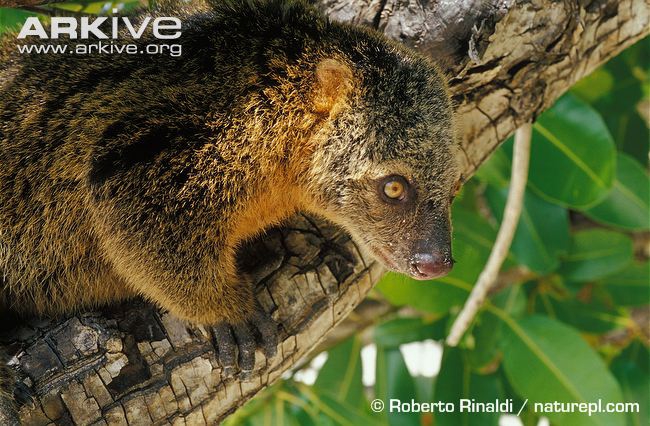| Citation |
|
Description |
Geographic Range [top]
Range Description: This species occurs on the island of Sulawesi, Indonesia, and the adjacent Indonesian islands of Butung, the Peleng Islands, the Togian Islands, and possibly Muna (Flannery 1995). It ranges from sea level to over 600 m asl.
Countries occurrence:
Native:
Indonesia
Additional data:
? Upper elevation limit (metres): 600
Range Map: Click here to open the map viewer and explore range.
Population [top]
Population: It is widespread and common in suitable habitat. A density estimate (based on line transects) of 2.0 individuals/km2 was reported for North Sulawesi in the 1993-1994 (OBrien and Kinnaird 1996). This species, however, was at one time much more plentiful. From 1979-1994, there had been a 95% decline in Tangkoko-DuaSudara Nature Reserve due to hunting and this decline may be indicative of trends for North Sulawesi (OBrien and Kinnaird 1996). This decline is only getting worse due to hunting and the pet trade (M. Kinnaird pers. comm.).
Current Population Trend: Decreasing
Additional data:
? Population severely fragmented: No
Habitat and Ecology [top]
Habitat and Ecology: It is typically found in undisturbed tropical lowland moist forests. This species does not readily use disturbed habitats, thus it is not usually found in gardens or plantations (M. Kinnaird pers. comm.). It is a largely diurnal, arboreal species that is often found in pairs. Its diet consists of a variety of leaves, preferring young leaves, and like many other arboreal folivores it spends much of its day resting in order to digest (Dwiyahreni et al. 1999).
Systems: Terrestrial
Threats [top]
Major Threat(s): It is threatened by habitat loss due to clearance of forest for small-scale agriculture and through large-scale logging. It is also heavily hunted by local people for food, and collected for the pet trade.
Conservation Actions [top]
Conservation Actions: It occurs in many protected areas, including: Tangkoko-DuaSudara Nature Reserve, Bogani Nani Wartabone National Park, Lore Lindu National Park, Morowali National Park, and a host of forest reserves. This species is nominally protected by Indonesian law.
Citation: Salas, L., Dickman, C., Helgen, K. & Flannery, T. 2008. Ailurops ursinus. The IUCN Red List of Threatened Species 2008: e.T40637A10346312. http://dx.doi.org/10.2305/IUCN.UK.2008.RLTS.T40637A10346312.en. Downloaded on 10 October 2018.
Disclaimer: To make use of this information, please check the .
Feedback: If you see any errors or have any questions or suggestions on what is shown on this page, please provide us with feedback so that we can correct or extend the information provided
|

